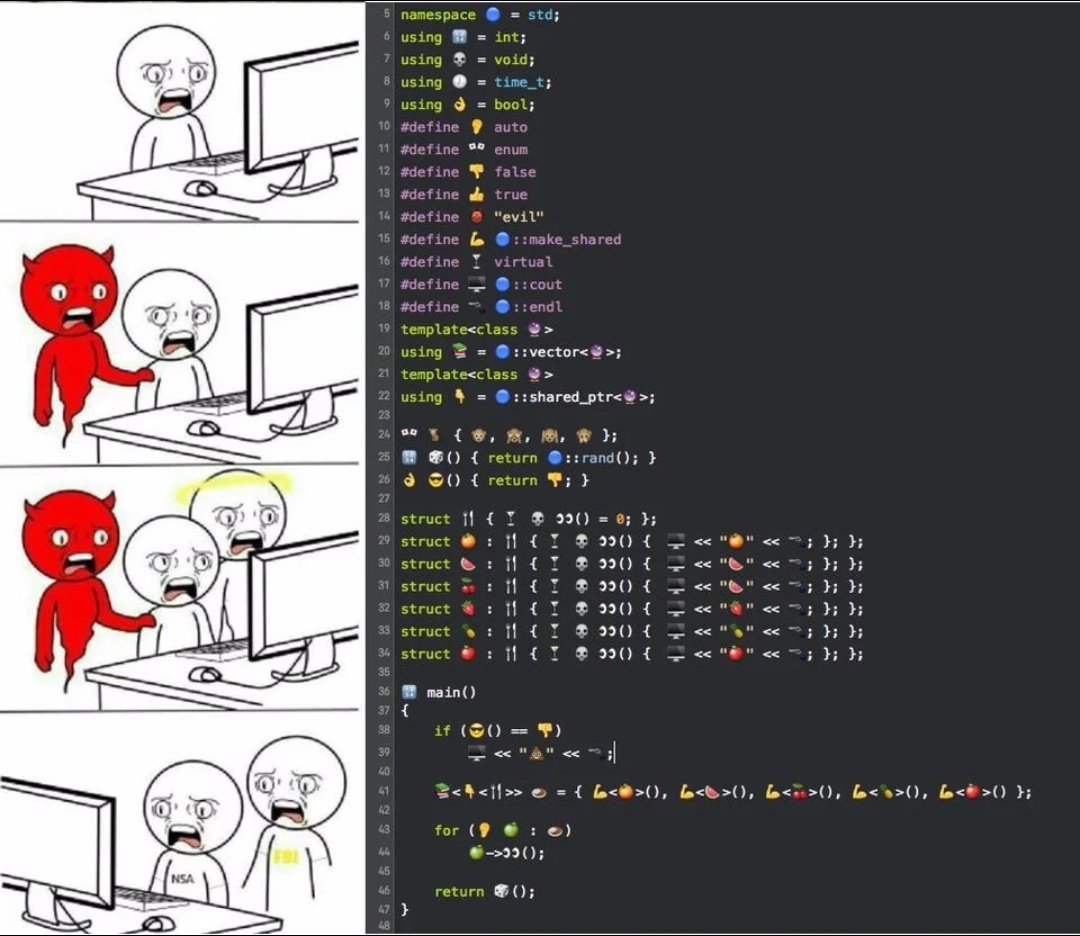this post was submitted on 15 Aug 2023
742 points (97.1% liked)
Programmer Humor
32563 readers
586 users here now
Post funny things about programming here! (Or just rant about your favourite programming language.)
Rules:
- Posts must be relevant to programming, programmers, or computer science.
- No NSFW content.
- Jokes must be in good taste. No hate speech, bigotry, etc.
founded 5 years ago
MODERATORS
you are viewing a single comment's thread
view the rest of the comments
view the rest of the comments

It would be great to use some emojis in coding.
Imagine how much more readable it would be if you could break a loop with 💀 or return true with 👍. Or use ❓for ifs, or ↔️ for switch (the emoji didn't work for that one). Or use an emoji to represent a custom object?
Maybe the ECMA should get on that!
Edit: I guess you can use emojis for custom objects in js.
Edit 2: ➡ for console.log
You'd still be left with the brackets and braces though. It might make more sense in a whitespace-based language pike Python
I see your point. Personally, I like the brackets and braces, they help organize. Or maybe that's just what I'm used to.
emacs lisp already lets you use the full range of unicode.
Sorry, I meant ECMAScript
Programming typefaces with ligatures are a step in this direction.
I would try this in something like Haskell, where some of the more exotic character sequences get tricky to recognise.
Unison might be the best language to test this in. Having identifiers separate from the actual definitions, you can call anything whatever you want.
@erogenouswarzone
https://github.com/StavromulaBeta/emoji-apl
@Shady_Shiroe